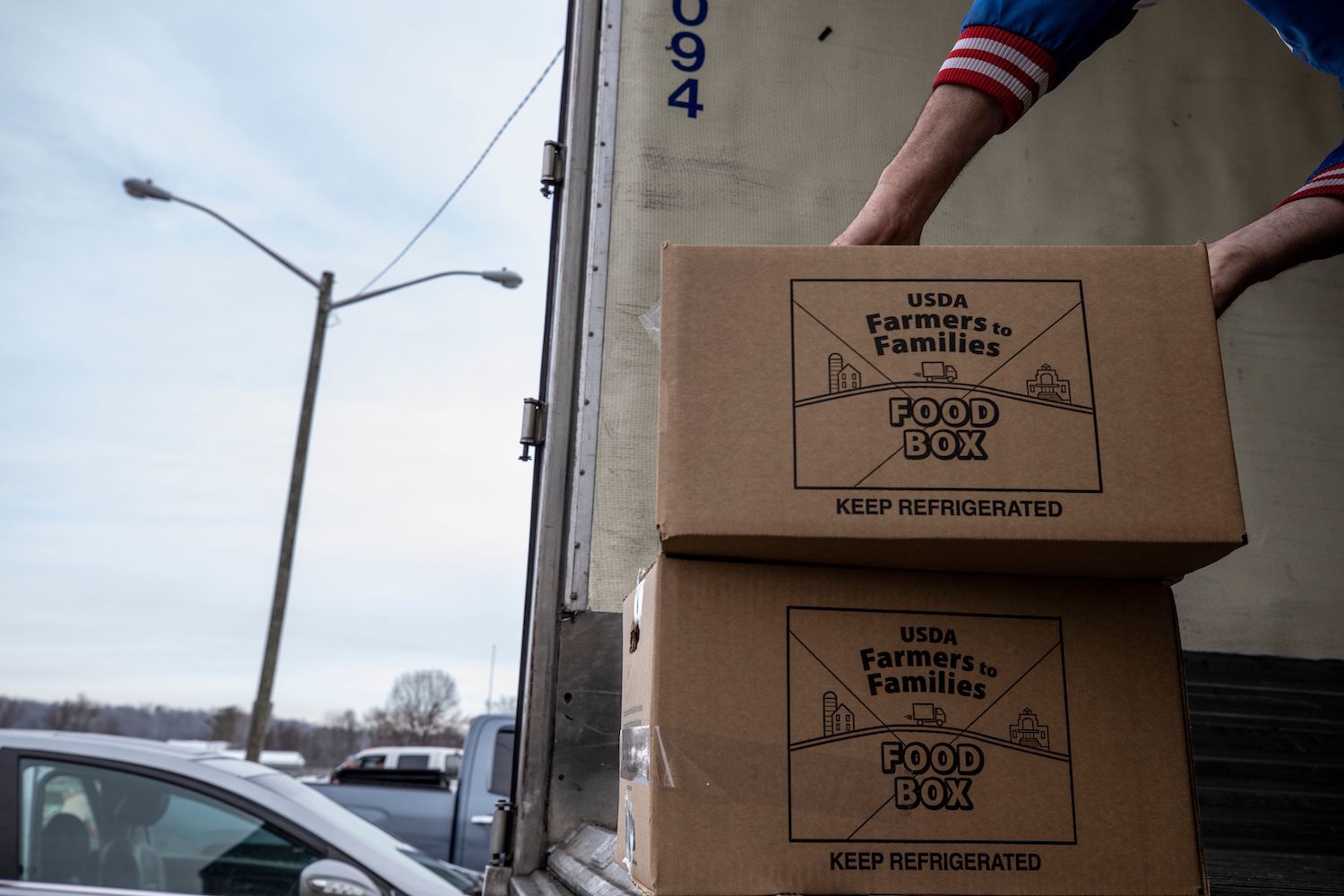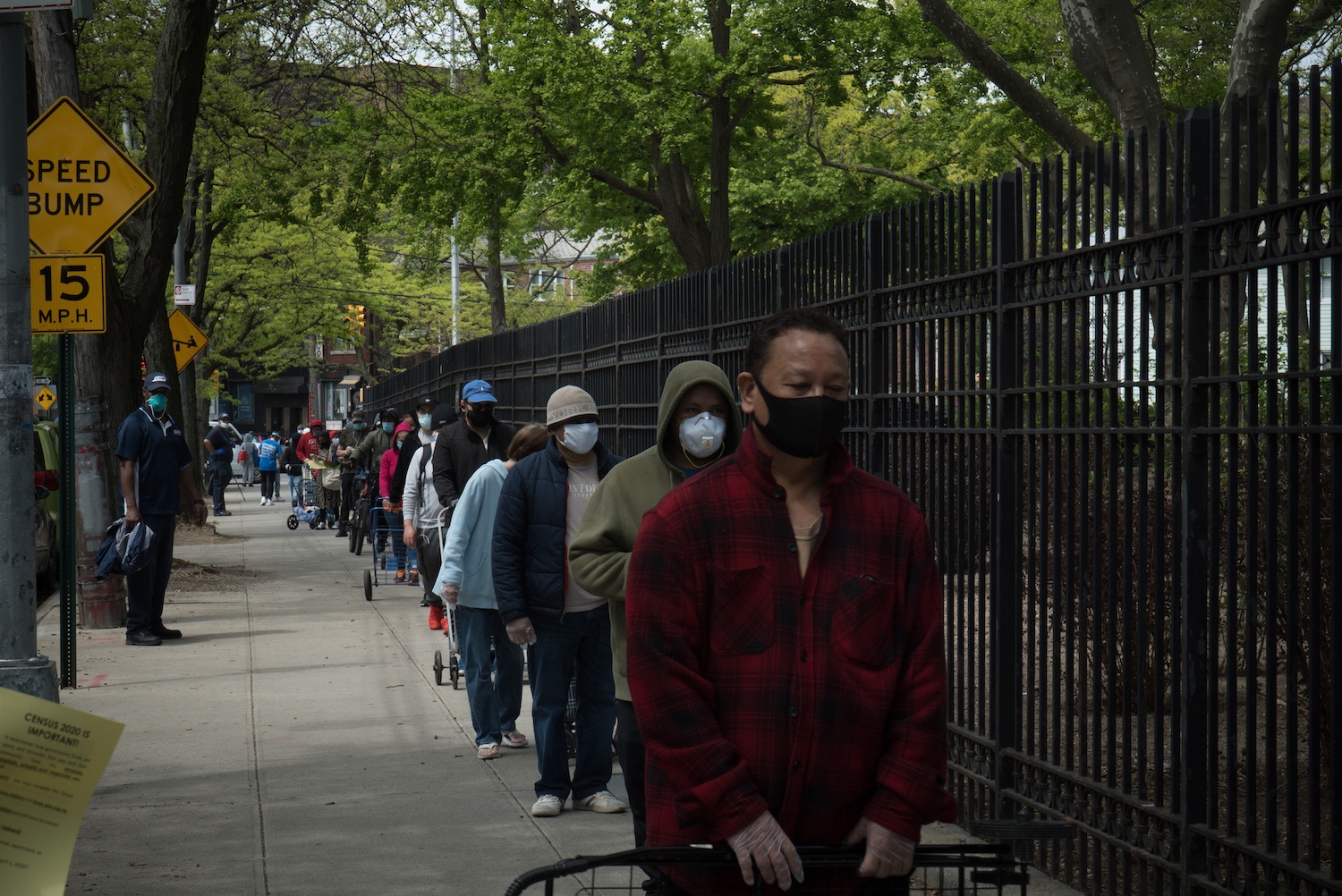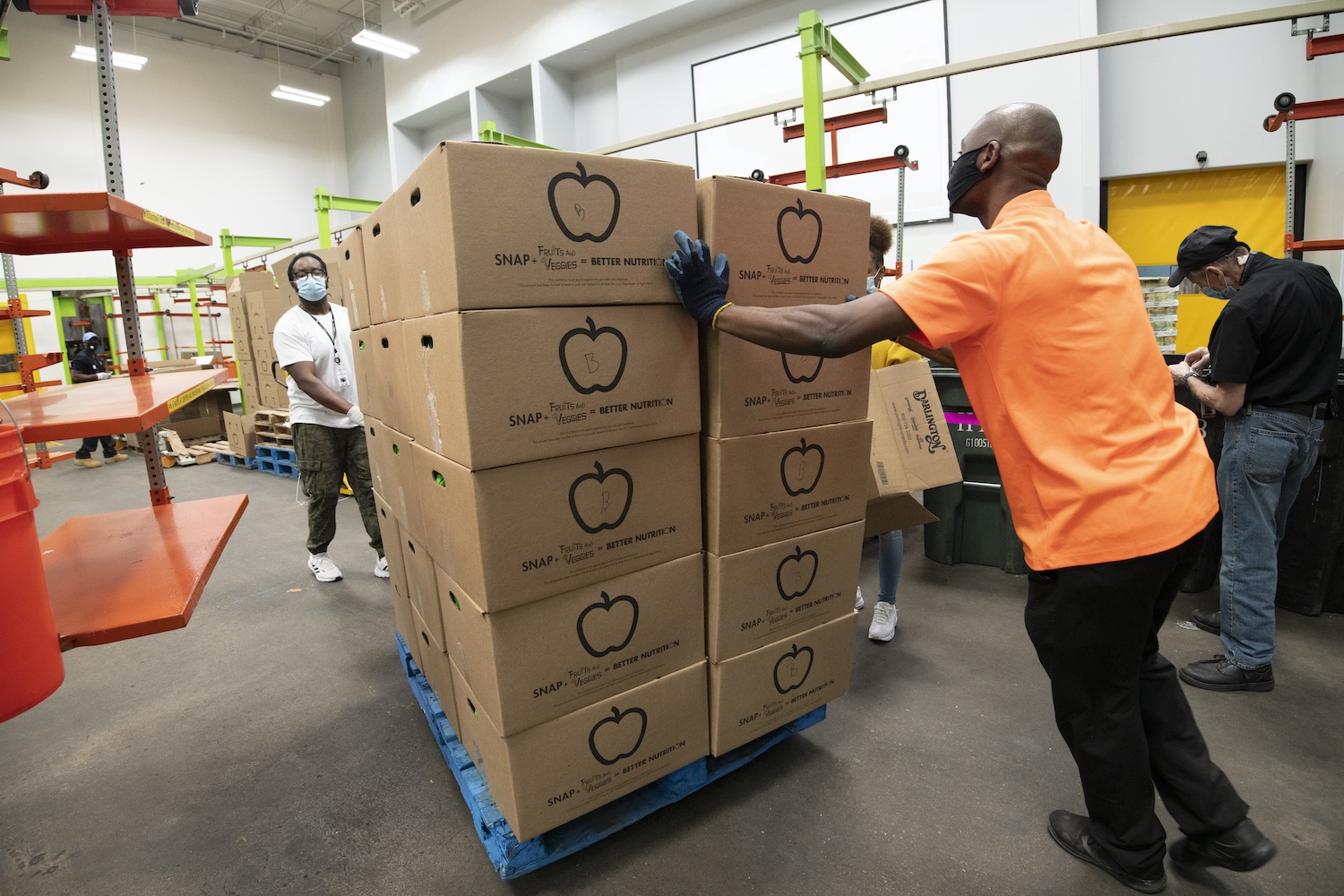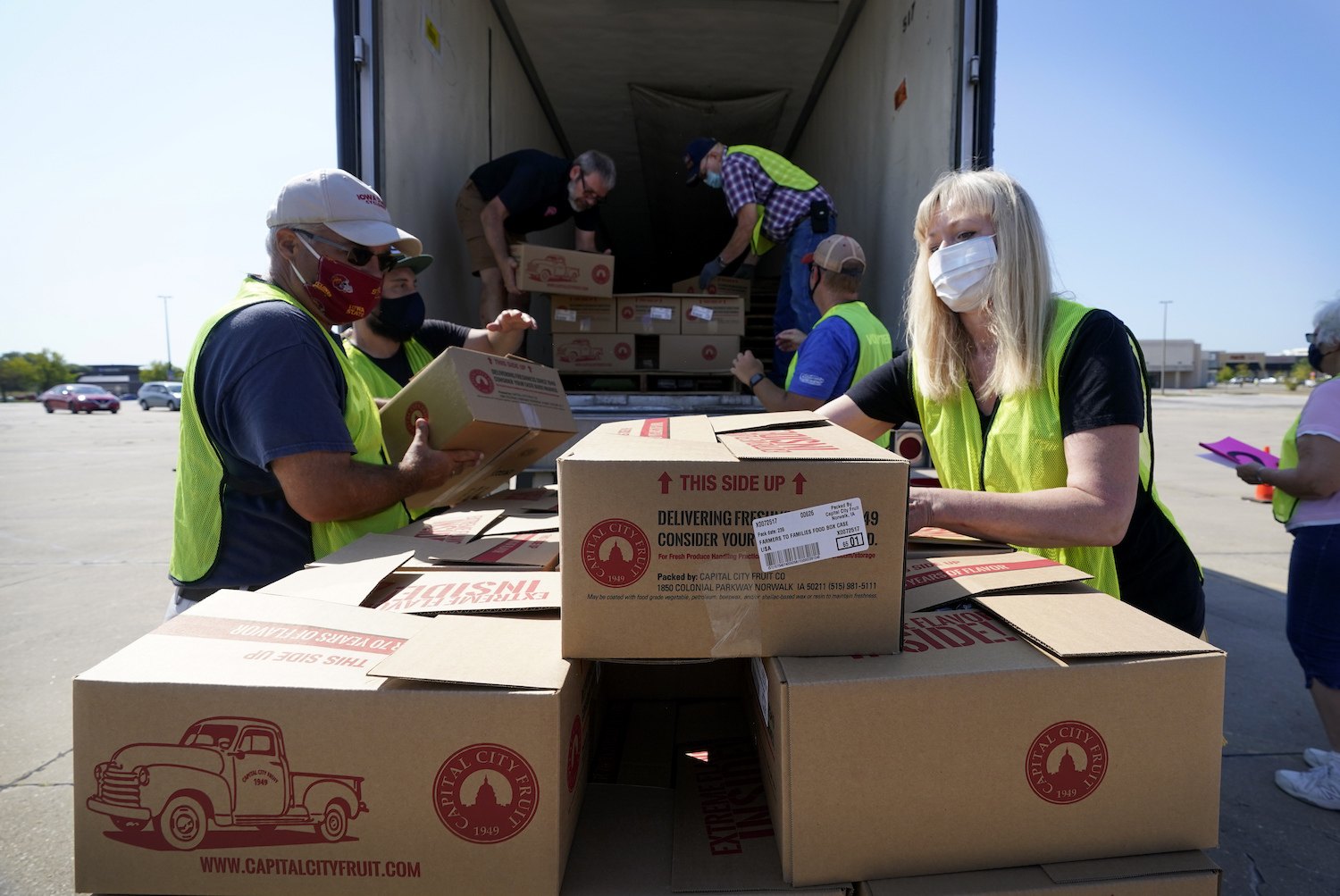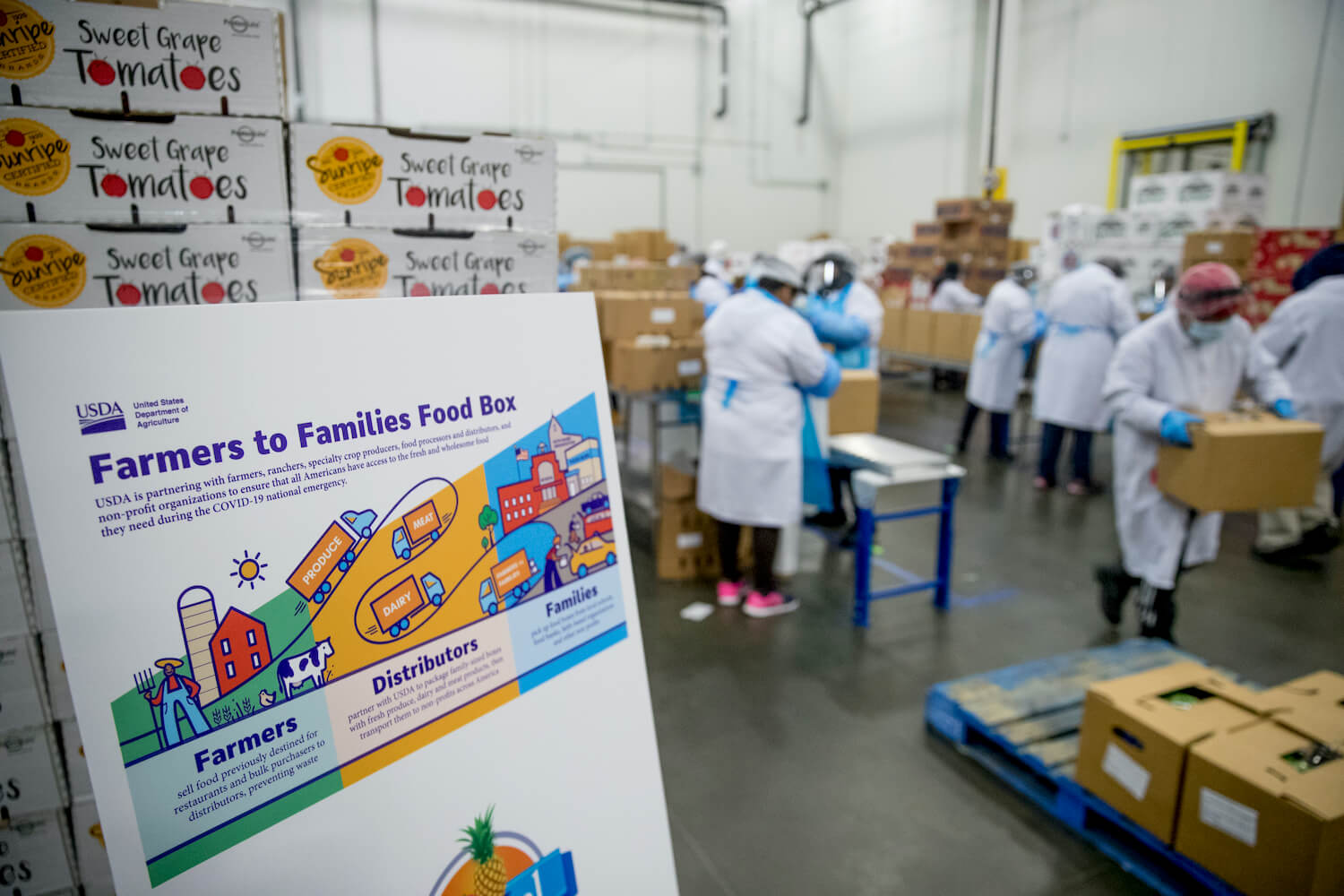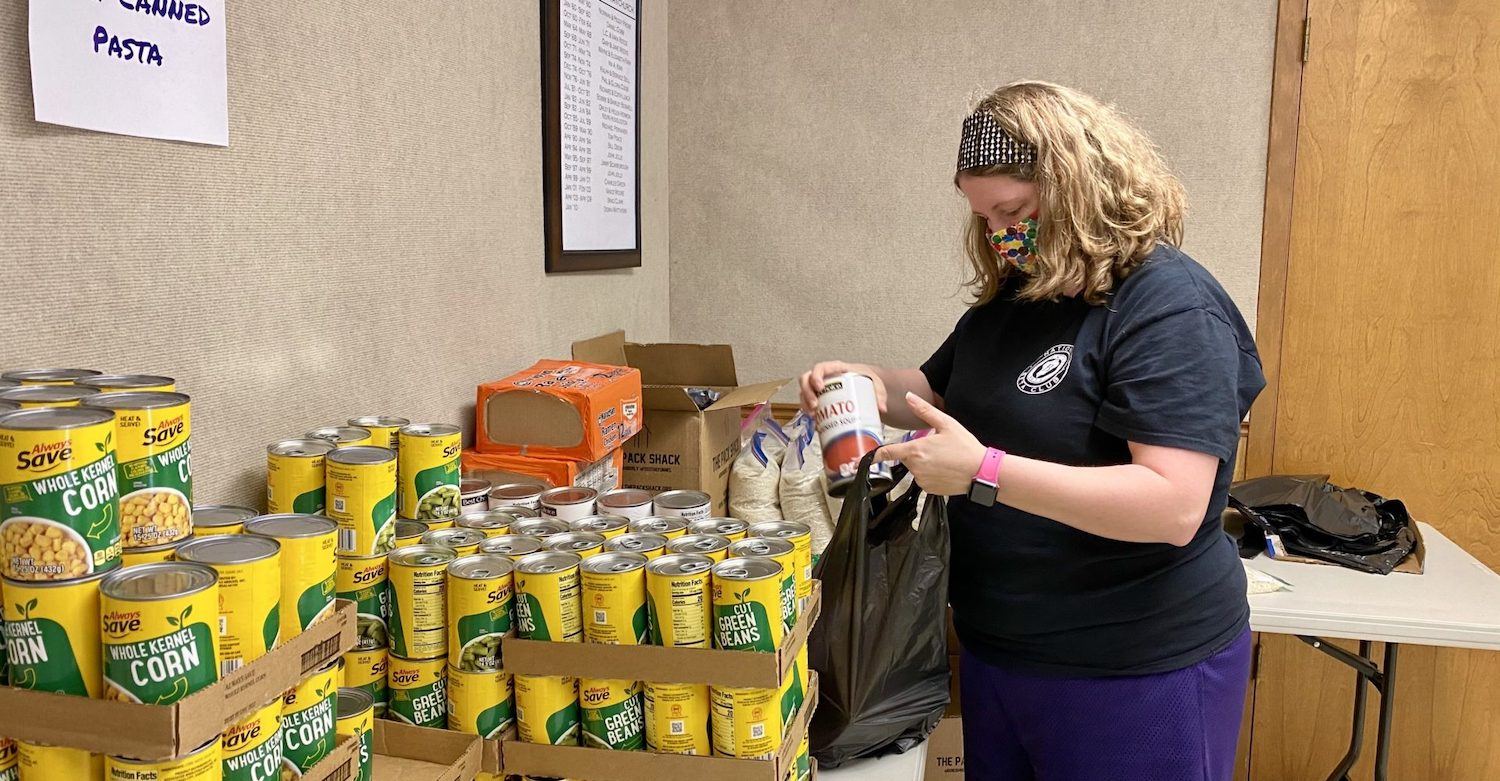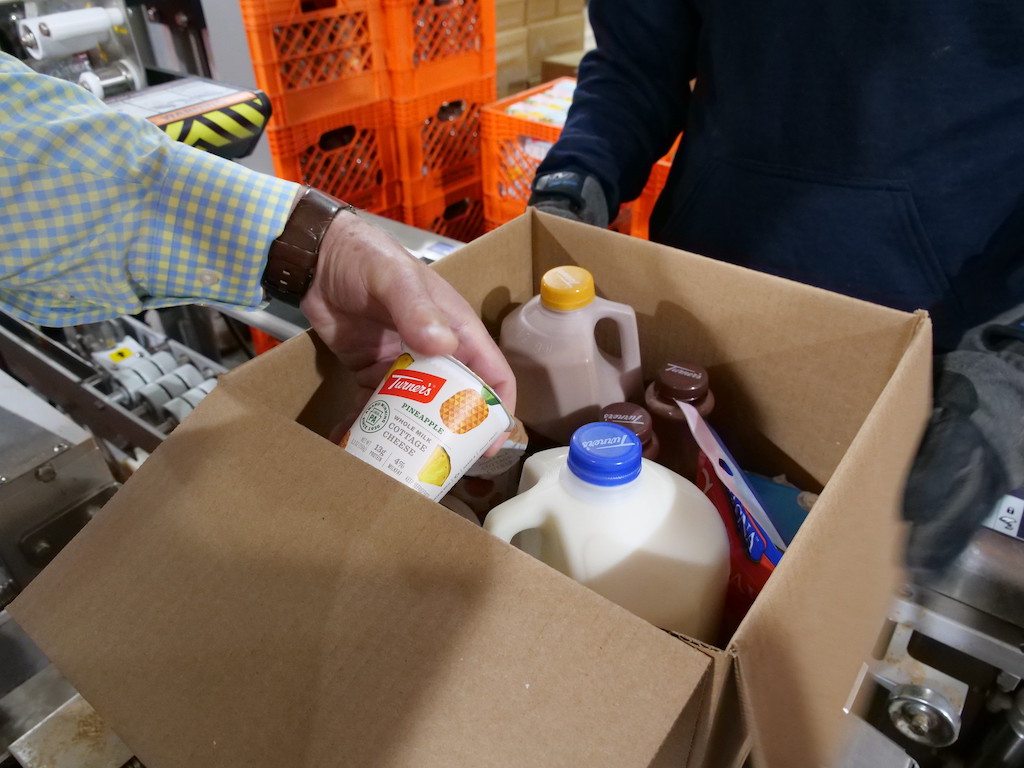Since the start of the Farmers to Families Food Box program, Delaware County, Oklahoma, resident Billy Hardison estimates that he’s handed out about 38,000 boxes of food in four Oklahoma counties. That’s approximately $1.5 million worth of taxpayer-funded food aid, according to invoice details obtained through the Freedom of Information Act.
But people who have received boxes from Hardison are raising red flags about the way he handed them out. Their concerns are the latest in a history of program mismanagement by contractors, nonprofits tasked with aid delivery, and the Department of Agriculture (USDA) itself.
Beginning in January, Hardison asked that all would-be recipients first attend an event in the days prior to picking up aid, where they got “tickets” that guaranteed a certain number of food boxes. After the tickets were distributed, Hardison presented a religious sermon featuring a 15-minute “ghost story”—perhaps a reference to the Holy Ghost—and led a group prayer.
“Hundreds of people gathered together in one place to listen to a sermon is not a safe thing, whether it’s outside or not.”
In a phone call, Hardison said that this process allowed him to estimate how many boxes the community would need before handing them out, and helped him ensure that no one would leave empty-handed. But this isn’t standard practice when it comes to food box distribution. For recipients, it meant they had to make two trips to get food boxes—one to obtain a ticket, another for the food. Hardison said that no one was required to listen to the sermon and that he made it clear that people were welcome to leave beforehand. On Facebook, Hardison clarified that people who showed up to food box distribution events without tickets could receive boxes if any were available after ticketed recipients had been served.
However, members of the community say they still view this policy as discriminatory. “It’s a government-based program, it shouldn’t be faith-based,” said Bridget Sisley-Smith, a resident of Delaware County. She sent multiple letters of complaint to USDA, which were viewed by The Counter.
Sisley-Smith is a citizen of the Cherokee Nation, and for her, Hardison’s proselytizing echoes the colonial violence that her ancestors experienced. She also believes his events contradicted Covid-19 public health guidelines. “Hundreds of people gathered together in one place to listen to a sermon is not a safe thing, whether it’s outside or not.” She stopped getting food boxes after Hardison started the sermons.
But the USDA left it to distributors—skilled in purchasing vegetables but often inexperienced in the world of food aid—to ensure that the nonprofits who received their boxes were following the rules.
Food pantry operators in the area say that Hardison’s distribution process is harmful to families in need.
“A lot of times, [community members] don’t have a running car,” said Cori Stotts, a volunteer with the Good Neighbor Project, a Miami, Oklahoma, group that distributed food boxes during the program’s first round. “So asking them to come once and sit through this 15-minute message and then have to return the second day in order to be able to pick up the boxes—I knew that that was going to be a hurdle and a hardship for these families and, for many, impossible,” she added. Stotts said her organization has not been able to secure any boxes since last summer, but does not know why.
[Subscribe to our 2x-weekly newsletter and never miss a story.]
Hardison’s operation violated multiple USDA rules. Food boxes are supposed to be distributed by qualified nonprofits, not individuals. Hardison said he receives the boxes, packaged by the distributor GoFresh, from an intermediary. According to USDA, contractors like GoFresh are “responsible for all activities associated with delivery of product into the hands of the final recipients, individual citizens.” That raises the question of why GoFresh—which has been awarded nearly $125 million in contracts through this program since its first round—was apparently not providing adequate oversight of the last-mile distribution of its boxes.
Hardison would not disclose his source or profession, saying via text that “I work” and “if you’re going to identify me as anything, identify me as somebody that loves god and loves people.” He wrote on Facebook that he had dropped off food box milk at liquor stores, an additional unauthorized distribution method. And proselytizing at distribution sites—not to mention distributing tickets at a separate sermon—are clear violations of rules banning the commingling of religion and federal aid. USDA also asks that pantries limit boxes to one per family to ensure that everyone receives help. Hardison said that he handed out up to 30 boxes per recipient because he knew they would further distribute the aid among neighbors and friends.
A representative for GoFresh said the company ended its partnership with a site affiliated with Hardison after receiving an anonymous complaint via email on February 26, adding that Hardison received only two truckloads in February. GoFresh refused to disclose the names of the intermediary or intermediaries that gave the boxes to Hardison. GoFresh had no comment on how Hardison got the boxes in the first place, saying only that the company ran training programs with nonprofit partners about how to distribute the boxes.
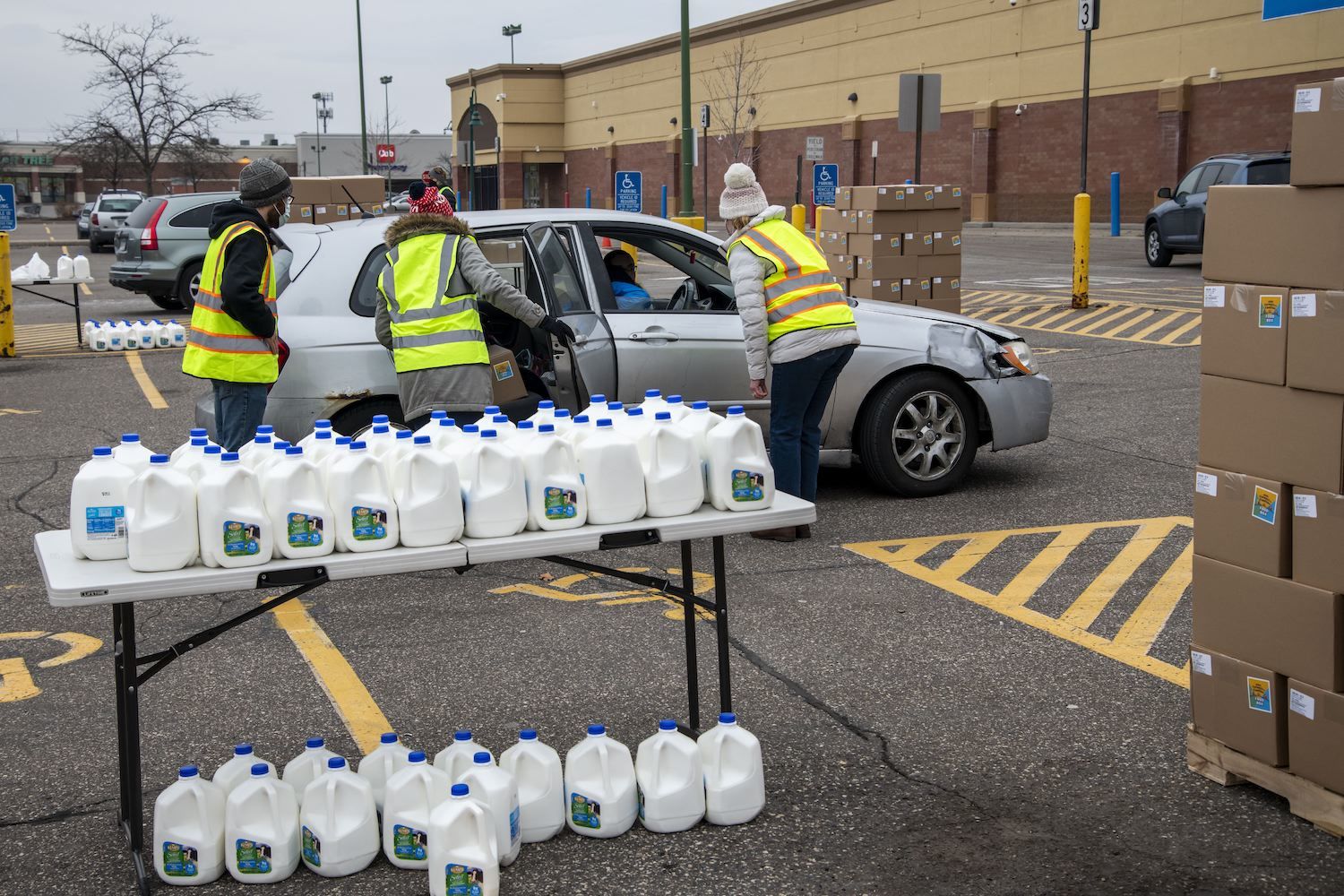
Food provided by the USDA’s Farmers to Families Food Box program was distributed through a local church in St. Paul, Minnesota.
Michael Siluk/Education Images/Universal Images Group via Getty ImagesThe ticketed sermon system highlights the pitfalls of a disorganized, multibillion-dollar food aid plan now entering its 10th month of operation. Rather than expand food stamps or use existing federal food aid channels to get food to people in need during the pandemic, the Trump administration last May conjured a brand-new program out of thin air. In the early days of Covid-19, the Farmers to Families Food Box didn’t seem like such a bad idea: USDA hired distributors to purchase produce, meat, and milk; assemble the food into boxes; then deliver them to pantries as part of a “truck to trunk” operation that simultaneously supported farmers who had suddenly lost business and families that had suddenly lost income.
But the agency left it to distributors—skilled in purchasing vegetables but often inexperienced in the world of food aid—to ensure that the nonprofits who received their boxes were following the rules. Some organizations went to heroic lengths to get food to people who needed it, often at their own expense. Others like Hardison’s operation have handed out aid in a slapdash fashion, often without verifying recipients’ needs, and even going so far as to use the program to spread religious beliefs. Almost one year later, it’s not clear the agency’s efforts to strengthen program oversight have done much to discourage bad actors.
The problems with the Farmers to Families program started before the first food box ever reached a pantry. USDA selected some contractors with no experience in food distribution, including Yegg, Inc., a company that had previously advertised itself as a financial services provider and was later accused of sending $3 million worth of milk to itself. The agency axed a $40 million contract with another company, California Avocados Direct, before it even began assembling boxes. Gaping distribution holes soon became evident, too: The entire state of Maine was excluded from the first round of contracts.
In the first round of distribution, as car lines at food banks snaked for miles in some areas, more than 1,000 counties received no boxes, even while small churches in rural areas welcomed up to nine truckloads per day.
Once distribution began, some food pantries reported that food was rotting in boxes or that the boxes themselves were falling apart. In some cases, promised boxes simply failed to materialize. In others, food banks incurred tens of thousands of dollars of expenses in trucking and labor costs after distributors refused to deliver boxes to individual pantries.
These hiccups had consequences. In the first round of distribution, as car lines at food banks snaked for miles in some areas, more than 1,000 counties received no boxes, even while small churches in rural areas welcomed up to nine truckloads per day.
Last fall, we reported that the Jehovah’s Witnesses were limiting distribution to those who attended religious services, and encouraging members to take boxes regardless of need. Elsewhere, churches boasted “free food” giveaways on Instagram, with “no questions asked.” There was a massive disconnect between the program’s intent—getting free food quickly to people who needed it while also supporting farmers—and the program’s reality, which looked increasingly like a free for all.
Members of Congress took note, and the Government Accountability Office recommended USDA evaluate the program in September. The House Select Subcommittee on the Coronavirus Crisis began investigating the food box program over the summer, and the Trump administration eventually tightened requirements for distributors seeking to contract with the agency. Yet the program remains largely intact and ridden with inequities, including these new allegations of discrimination. On January 19, the day before inauguration, the Trump administration announced contractors for a fifth round of food box distribution set to run through April.
While Hardison brags of receiving multiple truckloads per week, Facebook groups dedicated to the program are still flooded with requests from people who are hoping to find food near home.
Some of the most basic problems first reported nearly a year ago persist. In mid-February, the failure of a New Jersey-based distributor to deliver boxes to Vermont food banks prompted demands for an investigation by the state’s congressional delegation. Hardison’s proselytizing and flagrant disregard for box-per-family limits, intended to make sure everyone gets food, echo reporting we published in September. And while Hardison brags of multiple truckloads he’s received, Facebook groups dedicated to the program are still flooded with requests from people who are hoping to find food boxes near home. The need for emergency food aid has not abated, but the multibillion-dollar food box program, now in its fifth round, continues to deliver help unevenly.
Despite the issues, newly sworn-in Secretary of Agriculture Tom Vilsack told Politico on Wednesday that he was convinced the boxes delivered fresh food to a number of areas, “remote areas in particular,” that might not have received vegetables and fruit otherwise. In response to our questions, the agency said it was reviewing the food box program. “Reports like these are one reason why USDA is currently assessing this program to determine its future,” wrote USDA spokesperson Matt Herrick in an email. “The food box effort served some communities well, but continues to face challenges in others, and so as part of our assessment, we are gathering feedback from distributors, nonprofits, and the individuals in communities where assistance is provided in rural and urban areas alike to learn what worked and didn’t.” Herrick added that the agency retains the right to end distributor contracts if it finds issues with performance.
Meanwhile, the program’s shortcomings are immediately detrimental to those who have been counting on it to deliver fresh food.
“The families that need these boxes are already struggling and having a really difficult time,” Stotts, the Oklahoma volunteer, said. “When you put a bunch of hoops and hurdles for people to go through … we miss the people that really need the help, and that’s unfortunate.”
